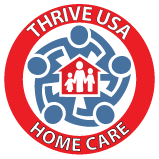5 Steps to Help Manage Arthritis
It might be difficult to perform daily tasks when you have arthritis. It can even be tough to work, participate in activities, and spend time with loved ones and friends while you are suffering from chronic pain or feeling out of control of your body. Learning how to manage your arthritis properly can benefit you physically, emotionally, and financially. While treatment plans differ from one patient to the next, there are certain lifestyle changes you can do to help you manage your arthritis better.
Utilize Programs
The Arthritis Foundation’s mission is to advance “research, advocacy, and disease management support” to assist you and others with arthritis in navigating the problems they confront, and to enable you to take a more active part in your own care. The association defines self-management as “adopting healthy lifestyle choices and learning to manage the physical and emotional effects of arthritis.” The foundation has created a Health Tracker to support self-management by allowing you to collect data that may assist you to make better healthcare decisions. The tracker helps to keep track of a number of parameters, including your ability to do everyday duties, pain levels, sleep patterns, and mental and emotional health.
Stay Active
Physical exercise is a non-drug method of relieving arthritis pain that is easy and effective. Physical activity can help adults with arthritis reduce pain, improve function, happiness, and quality of life. Other chronic diseases, such as heart disease and diabetes, can be reduced by engaging in regular physical activity. If you already have certain conditions, it can help you manage them.
Protect Your Joints
Arthritis can be triggered or aggravated by joint injury. Choose joint-friendly activities such as walking, biking, and swimming. These low-impact movements pose little danger of injury and do not twist or put undue strain on the joints. Find out how to exercise safely if you have arthritis.
Joint injuries from sports or work might increase the risk of developing osteoarthritis. Take actions to minimize or prevent joint injuries, such as wearing protective equipment and avoiding repetitive motion joint injury, to lessen the risk of developing or worsening osteoarthritis.
Talk to Your Doctor
Maintain as much exercise as your health allows, and adjust your activity level as your arthritis symptoms demand. It is better to engage in some physical exercise than to engage in none at all.
If you have joint pain or other arthritic symptoms, see your doctor. It’s critical to have a correct diagnosis as soon as possible so that you may begin treatment and strive to reduce symptoms and prevent the condition from worsening.
The objective of arthritis therapy is to relieve pain.
- Pain should be reduced.
- Reduce joint injury as much as possible.
- Maintain or improve function and quality of life.
Attending regular appointments with your health care physician and following your prescribed treatment plan will help you take control of your arthritis. If you have additional chronic problems like diabetes or heart disease, this is especially important.
Know What Behaviors to Avoid
The Mayo Clinic’s guidelines for arthritis management, including what not to do, are clear. As “being overweight might worsen difficulties of arthritis,” managing your weight and making an attempt to lose weight can have a positive impact on your condition. They also advise that you stop smoking, which adds stress to your connective tissues, and that you stop dwelling on the negative aspects of arthritis as this “may increase your pain and disability risk.”
How Thrive USA Home Care Can Help
It may seem tough to be optimistic when dealing with chronic arthritic pain, but remember that you are not alone. When you’re in need, Thrive USA Homecare caregivers are there to offer a hand around the house, assist with everyday chores, or simply keep you company on both good and bad days. Learn more about the various ways in-home care may assist you.


